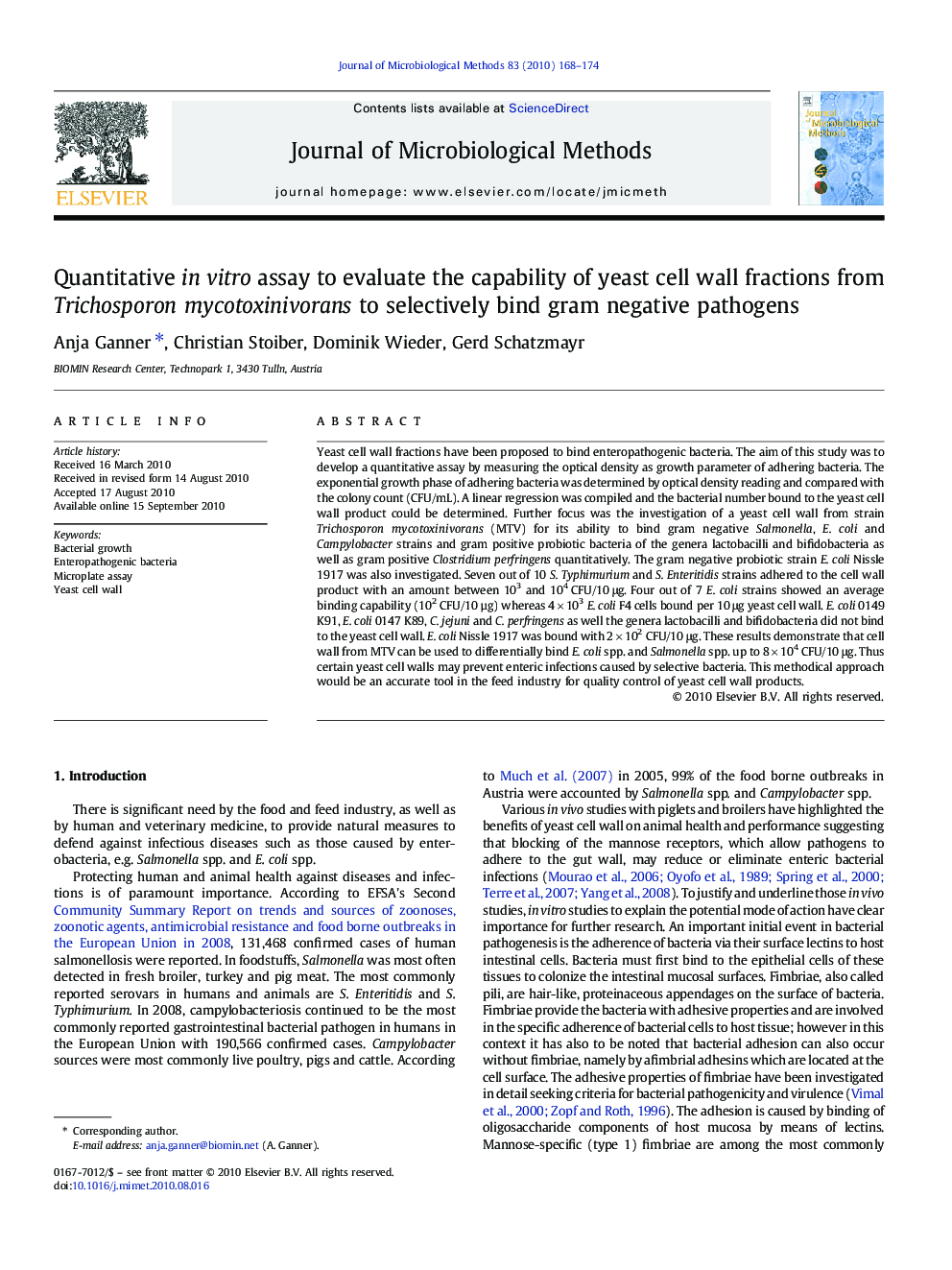| کد مقاله | کد نشریه | سال انتشار | مقاله انگلیسی | نسخه تمام متن |
|---|---|---|---|---|
| 2090414 | 1081501 | 2010 | 7 صفحه PDF | دانلود رایگان |

Yeast cell wall fractions have been proposed to bind enteropathogenic bacteria. The aim of this study was to develop a quantitative assay by measuring the optical density as growth parameter of adhering bacteria. The exponential growth phase of adhering bacteria was determined by optical density reading and compared with the colony count (CFU/mL). A linear regression was compiled and the bacterial number bound to the yeast cell wall product could be determined. Further focus was the investigation of a yeast cell wall from strain Trichosporon mycotoxinivorans (MTV) for its ability to bind gram negative Salmonella, E. coli and Campylobacter strains and gram positive probiotic bacteria of the genera lactobacilli and bifidobacteria as well as gram positive Clostridium perfringens quantitatively. The gram negative probiotic strain E. coli Nissle 1917 was also investigated. Seven out of 10 S. Typhimurium and S. Enteritidis strains adhered to the cell wall product with an amount between 103 and 104 CFU/10 μg. Four out of 7 E. coli strains showed an average binding capability (102 CFU/10 µg) whereas 4 × 103E. coli F4 cells bound per 10 μg yeast cell wall. E. coli 0149 K91, E. coli 0147 K89, C. jejuni and C. perfringens as well the genera lactobacilli and bifidobacteria did not bind to the yeast cell wall. E. coli Nissle 1917 was bound with 2 × 102 CFU/10 μg. These results demonstrate that cell wall from MTV can be used to differentially bind E. coli spp. and Salmonella spp. up to 8 × 104 CFU/10 μg. Thus certain yeast cell walls may prevent enteric infections caused by selective bacteria. This methodical approach would be an accurate tool in the feed industry for quality control of yeast cell wall products.
Journal: Journal of Microbiological Methods - Volume 83, Issue 2, November 2010, Pages 168–174